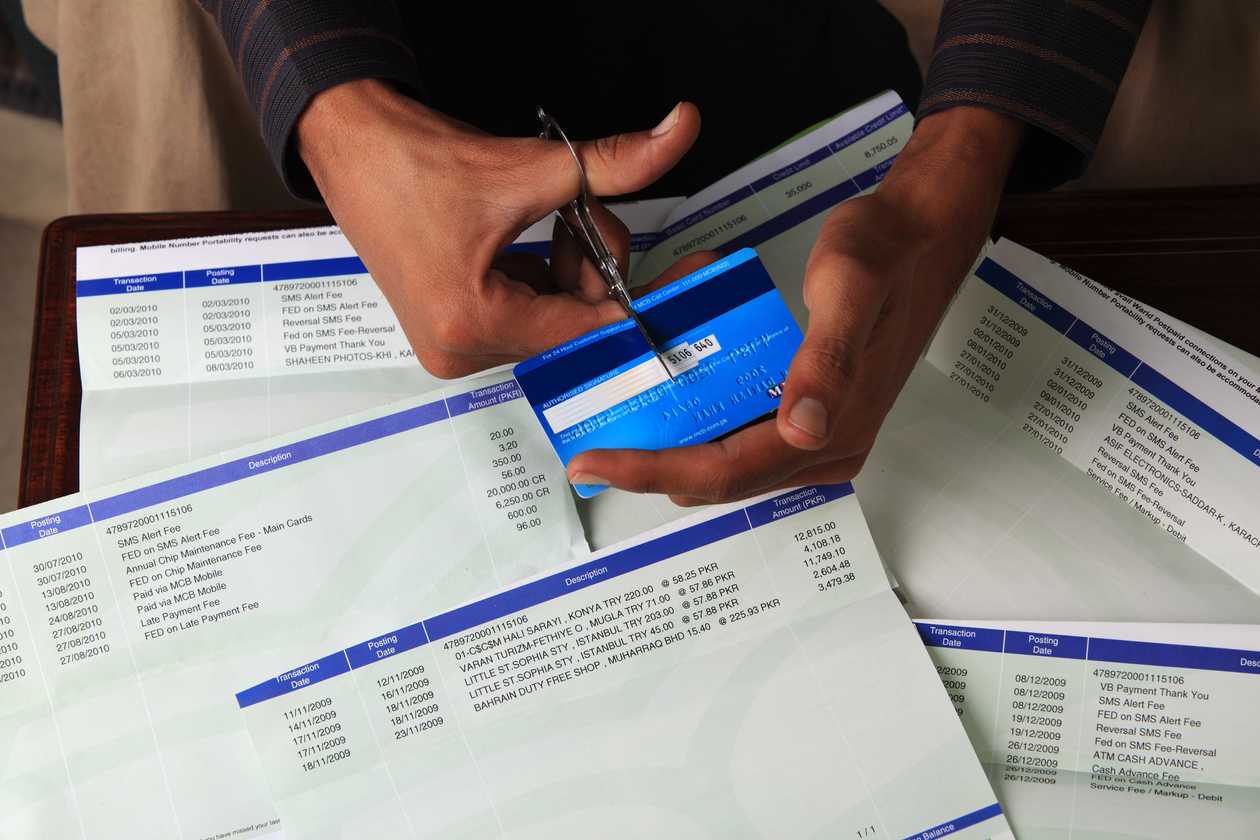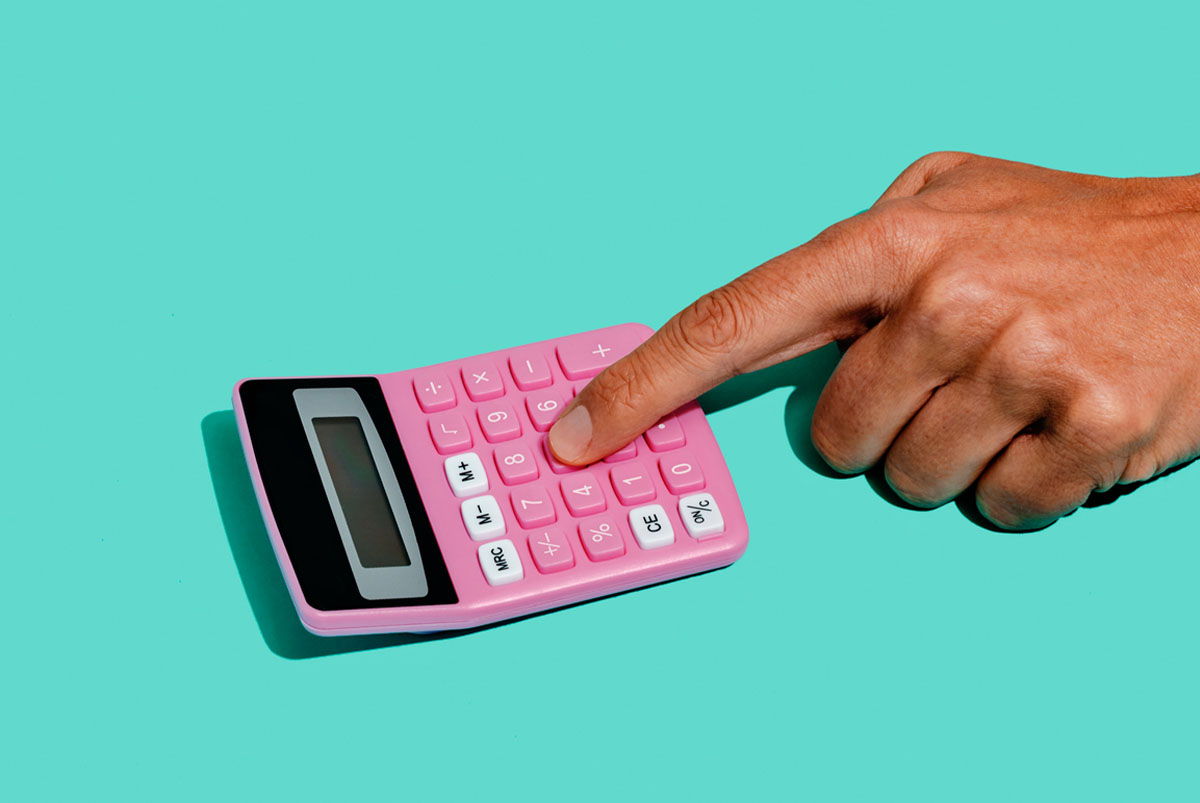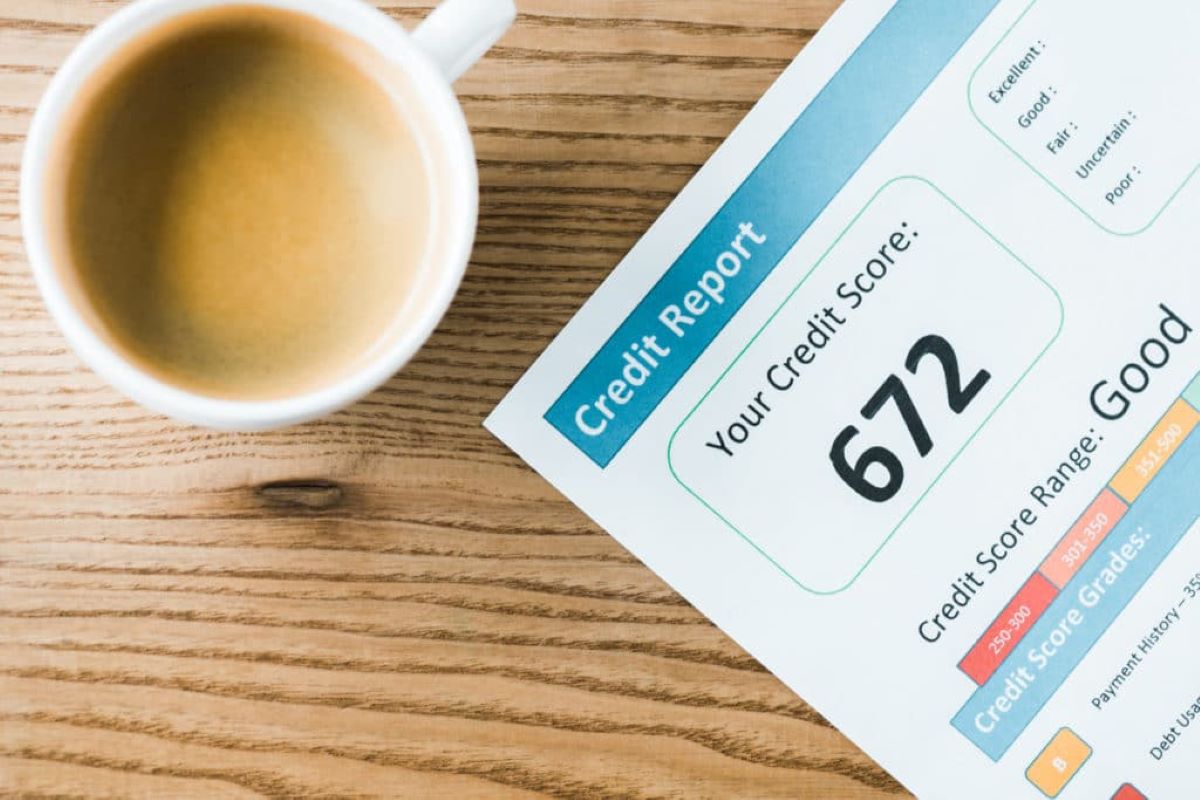

Finance
How Long Do Tradelines Stay On Your Credit
Published: January 11, 2024
Learn about the duration that tradelines remain on your credit and their impact on your finance. Empower yourself with expert insights on credit management.
(Many of the links in this article redirect to a specific reviewed product. Your purchase of these products through affiliate links helps to generate commission for LiveWell, at no extra cost. Learn more)
Table of Contents
Introduction
Welcome to the world of credit! Whether you are a seasoned borrower or just starting your credit journey, understanding the dynamics and factors that influence your credit score is essential. One such factor that plays a significant role in shaping your creditworthiness is tradelines.
Tradelines are a vital component of your credit report that provide a detailed snapshot of your credit history. Lenders use this information to assess your creditworthiness and make informed decisions about your loan applications. Understanding how long tradelines stay on your credit report can help you make responsible financial decisions and take strategic steps to improve your credit standing.
In this article, we will explore the world of tradelines, their impact on your credit, and how long they stay on your credit report. Additionally, we will discuss the factors that influence the duration of tradelines and provide insights on how to remove or add positive tradelines to enhance your credit profile.
So, let’s dive deep into the fascinating world of tradelines and unravel the mysteries of their impact on your credit!
What are Tradelines?
Tradelines are accounts or credit lines listed on your credit report that reflect your borrowing history with various lenders. They provide a comprehensive record of your past and current credit activities, including credit cards, loans, mortgages, and other lines of credit.
Each tradeline includes valuable information such as the lender’s name, account type, account balance, credit limit, payment history, and any derogatory remarks or missed payments. This data helps lenders assess your creditworthiness and determine the level of risk associated with extending credit to you.
Tradelines are categorized as either revolving or installment. Revolving tradelines include credit cards and lines of credit that have a revolving balance and a set credit limit. Installment tradelines, on the other hand, consist of loans with fixed terms, such as auto loans, student loans, and mortgages.
It’s important to note that tradelines can have a positive or negative impact on your credit score, depending on your payment history, credit utilization, and overall debt management. Positive tradelines, such as on-time payments and low credit utilization, can greatly enhance your credit score and borrowing potential. Negative tradelines, such as late payments or defaults, can have the opposite effect, lowering your credit score and making it more challenging to obtain credit in the future.
Understanding the role of tradelines in your credit history is crucial for maintaining a healthy financial profile. By managing your tradelines responsibly and strategically, you can build a solid credit foundation and open doors to better loan terms and financial opportunities.
The Impact of Tradelines on Your Credit
Tradelines play a significant role in determining your creditworthiness and influencing your credit score. The information contained in your tradelines is used by credit reporting agencies to calculate your credit score, which is a numerical representation of your creditworthiness.
Positive tradelines have a beneficial impact on your credit. For example, if you have a credit card with a low balance, an extended payment history, and a good record of on-time payments, it can boost your credit score. These positive tradelines demonstrate responsible credit management and make you a more attractive borrower in the eyes of lenders.
On the other hand, negative tradelines can harm your credit and lower your credit score. For instance, if you have a history of missed payments, high credit card balances, or collection accounts, it can negatively impact your creditworthiness. Lenders view these negative tradelines as a higher risk, making it more challenging to secure new credit or obtain favorable loan terms.
It’s important to note that the impact of tradelines on your credit is not static. It can vary based on several factors, such as the age of the tradeline, the credit limit or loan amount, and the payment history associated with each tradeline. Also, the overall number of tradelines and the mix of revolving and installment accounts can impact your credit score.
Improving your credit score requires a strategic approach to managing your tradelines. By focusing on maintaining a positive payment history, keeping your credit utilization low, and responsibly managing all your tradelines, you can enhance your credit profile and increase your chances of being approved for credit in the future.
Keep in mind that the impact of tradelines on your credit is not immediate. It takes time to build a solid credit history and establish positive tradelines. Therefore, it’s important to be patient and consistent with your credit management habits to see long-term improvements in your credit score.
How Long Do Tradelines Stay on Your Credit?
The duration of tradelines on your credit report can vary depending on the type of tradeline and the credit reporting agency’s policies. In general, tradelines can stay on your credit report for several years, with both positive and negative tradelines having an impact on your credit score.
Revolving tradelines, such as credit cards and lines of credit, typically remain on your credit report for a longer period compared to installment tradelines like loans. Positive revolving tradelines with a good payment history can stay on your credit report indefinitely as long as the account remains open. This can help you build a long and positive credit history, which is beneficial for your credit score.
However, if you close a revolving tradeline, it will still remain on your credit report for a certain duration, typically up to 10 years. Closed accounts with a positive payment history can still have a positive impact on your credit score, while closed accounts with negative payment history may have a lingering negative effect.
On the other hand, installment tradelines have a specified duration on your credit report. For example, auto loans and student loans generally remain on your credit report for about seven years after the account has been closed or paid off. Mortgages, which are long-term loans, can stay on your credit report for up to 10 years.
It’s important to note that the impact of tradelines on your credit score lessens over time. Lenders tend to prioritize your recent credit behavior over older tradelines when assessing your creditworthiness. This means that as time passes, the influence of past tradelines on your credit score diminishes, allowing you to rebuild and improve your credit with responsible financial habits.
Remember that the length of time tradelines stay on your credit report may vary among credit reporting agencies. It’s always wise to review your credit reports regularly and ensure that they accurately reflect your credit history. If you suspect any errors or inaccuracies, you can dispute them with the credit reporting agency to ensure the integrity of your credit report.
Factors Affecting Tradeline Duration
Several factors can influence the duration of tradelines on your credit report. Understanding these factors can help you better manage your credit and make informed decisions regarding your credit accounts. Here are some key factors that can affect the duration of tradelines:
- Account Status: The status of your account plays a crucial role in determining how long a tradeline will appear on your credit report. Active accounts, whether they are open or closed, will typically remain on your credit report for a longer duration compared to accounts that have been deactivated or closed.
- Account Type: The type of account also affects the duration of a tradeline. Revolving tradelines, such as credit cards, tend to stay on your credit report longer than installment tradelines, such as loans. This is because revolving tradelines provide ongoing credit activity that can be assessed by lenders.
- Payment Status: Whether you have made timely payments or had any delinquencies on a particular account can impact the duration of the tradeline. Positive payment history can extend the lifespan of a tradeline, while missed payments or defaults can shorten its duration. Generally, negative payment history stays on your credit report for up to seven years.
- Credit Reporting Agency Policy: Each credit reporting agency may have slightly different policies regarding how long tradelines are reported. While most follow a standard duration, it’s important to check with the specific credit reporting agency to understand their guidelines and ensure the accuracy of your credit report.
- Aging of Information: As time passes, the influence of older tradelines on your credit score diminishes. Lenders typically place more emphasis on recent credit activity and behavior when evaluating your creditworthiness. Therefore, the impact of older tradelines on your credit score decreases over time.
It’s crucial to remember that the duration of tradelines does not guarantee their removal from your credit report. Even after a tradeline reaches its duration threshold and is no longer reported, it may still be visible on your credit report. However, its impact on your credit score will likely be minimal.
By staying vigilant and managing your credit accounts responsibly, you can positively influence the duration and impact of tradelines on your credit report. This includes making timely payments, keeping balances low, and regularly reviewing your credit report to ensure its accuracy and address any discrepancies promptly.
Removing Tradelines from Your Credit Report
If you come across inaccurate or outdated tradelines on your credit report, it’s essential to take steps to have them removed. Removing such tradelines can help improve the accuracy of your credit report and potentially enhance your credit score. Here are a few options to consider when it comes to removing tradelines:
- Dispute Errors: If you believe there is a mistake or inaccurate information associated with a tradeline on your credit report, you have the right to dispute it with the credit reporting agency. Contact the agency in writing and provide detailed documentation to support your claim. The agency will investigate the dispute and, if found to be valid, remove or correct the tradeline from your credit report.
- Negotiate with Creditors: In some cases, if you have a legitimate reason for wanting a tradeline removed, you can try negotiating with the creditor directly. This could involve resolving an outstanding debt or providing evidence to support your request. If successful, the creditor may voluntarily remove the tradeline from your credit report.
- Utilize Credit Repair Services: There are companies that specialize in credit repair services and can assist you in the process of removing inaccurate or negative tradelines from your credit report. These services can be helpful if you’re unsure about the steps to take or if you prefer to have professional guidance throughout the process. However, it’s important to research and choose a reputable credit repair service provider.
- Age Out Naturally: As mentioned earlier, tradelines will naturally age out of your credit report after a certain duration. Positive tradelines with a good payment history can have a lasting positive impact on your credit score. Negative tradelines, on the other hand, will gradually have less influence as they age. It’s important to focus on building a positive credit history to offset the negative impact of any unfavorable tradelines.
Remember, the process of removing tradelines can take time and persistence. It’s crucial to stay proactive, monitor your credit report regularly, and address any inaccuracies promptly. By taking steps to ensure the accuracy of your credit report, you can create a more reliable credit profile and increase your chances of obtaining favorable loan terms in the future.
Adding Positive Tradelines to Improve Your Credit
If you’re looking to improve your credit profile and boost your credit score, adding positive tradelines to your credit report can be a strategic move. Positive tradelines demonstrate responsible credit management and can have a significant impact on your overall creditworthiness. Here are some steps you can take to add positive tradelines:
- Secured Credit Cards: Consider applying for a secured credit card. These cards require a security deposit, which serves as collateral against the credit limit. By using the secured card responsibly and making regular on-time payments, you can establish a positive payment history and gradually build your creditworthiness.
- AU (Authorized User) Status: If you have a close friend or family member with a good credit history, you can ask them to add you as an authorized user on one of their existing credit card accounts. This allows you to piggyback off their positive credit history, as the tradeline will appear on your credit report as well. However, make sure that the primary cardholder has a good payment history and low credit utilization.
- Credit Builder Loans: Some financial institutions offer credit builder loans specifically designed to help individuals establish or rebuild their credit. These loans typically require a small deposit or savings account, and you make monthly payments towards the loan. As you make timely payments, it demonstrates your creditworthiness and helps establish positive tradelines on your credit report.
- Peer-to-Peer Lending: Consider exploring peer-to-peer lending platforms where individuals lend money to others. By borrowing funds from a peer-to-peer lender and making timely payments, you can establish positive tradelines on your credit report and potentially improve your credit score.
- Rental Reporting Services: Some companies specialize in reporting your rental payment history to credit bureaus. By opting for a rental reporting service, your timely rent payments can be added as positive tradelines on your credit report, enhancing your credit profile.
It’s important to note that adding positive tradelines to your credit report takes time and consistent payment habits. Building a positive credit history requires responsible credit management, including making all payments on time, keeping credit card balances low, and managing your debt effectively.
While adding positive tradelines can be beneficial, it’s crucial to approach credit building with caution. Avoid taking on excessive debt or opening multiple accounts simultaneously, as this can have a negative impact on your credit score. It’s essential to maintain a balanced approach and make informed decisions when managing your credit.
By focusing on adding and maintaining positive tradelines, you can improve your creditworthiness over time. Gradually, your credit score will reflect your responsible credit behavior, opening doors to better loan terms, lower interest rates, and greater financial opportunities.
Conclusion
Understanding the world of tradelines and their impact on your credit is essential for maintaining a healthy credit profile. Tradelines provide valuable information to lenders, allowing them to assess your creditworthiness and make informed decisions about extending credit.
Knowing how long tradelines stay on your credit report is crucial in managing your credit effectively. While the duration may vary depending on the type of tradeline, payment history, and credit reporting agency policies, it’s important to focus on building and maintaining positive tradelines to improve your credit score.
By keeping a positive payment history, utilizing credit responsibly, and addressing any inaccuracies or errors on your credit report, you can enhance the accuracy and integrity of your credit profile. Additionally, adding positive tradelines through secured credit cards, authorized user status, credit builder loans, peer-to-peer lending, and rental reporting services can also improve your creditworthiness over time.
Remember that credit improvement is a gradual process. Building a strong credit foundation requires patience, consistency, and responsible credit management habits. Over time, the positive impact of your tradelines and credit behavior will help you access better loan terms, lower interest rates, and financial opportunities that align with your goals.
Regularly monitoring your credit report, staying informed about changes in credit reporting policies, and seeking professional advice when needed can all contribute to a healthier credit profile. By understanding and actively managing your tradelines, you can take control of your credit journey and pave the way for a brighter financial future.














